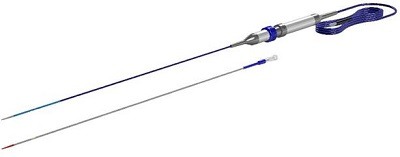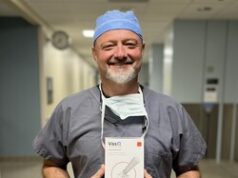 An international meta-analysis of clinical experience in patients who received an endovascular arteriovenous fistula (endoAVF) for haemodialysis access was presented at Leipzig Interventional Course (LINC; 30 January–2 February, Leipzig, Germany) 2018.
An international meta-analysis of clinical experience in patients who received an endovascular arteriovenous fistula (endoAVF) for haemodialysis access was presented at Leipzig Interventional Course (LINC; 30 January–2 February, Leipzig, Germany) 2018.
The meta-analysis, which analysed data from 236 patients with end-stage renal disease at 28 centres across seven countries, demonstrated positive clinical results using the everlinQ endoAVF System (TVA Medical).
The everlinQ endoAVF System received European CE mark in 2014 and Health Canada Medical Device License in 2016 for end-stage renal disease patients. It is not available for sale in the United States and is currently under review by the US FDA.
The results were presented by Tobias Steinke, chief of vascular and endovascular surgery at Schoen Hospital in Düsseldorf, Germany. “Our meta-analysis from four clinical studies and real-world experience across three continents supports the use of the everlinQ endoAVF System as a valuable haemodialysis access option without open surgery,” he said.
The meta-analysis included four clinical studies with pooled efficacy and safety data from 157 and 125 patients, respectively, using both the 4F or 6F versions of the everlinQ catheter system, as well as data from 79 commercial cases, using the 6F catheter system. The following results were demonstrated:
- Procedure success rates of 96.8% and 97.8% in the clinical study population and real-world cases, respectively, with an acceptable safety profile
- Fistula maturation rate of 88% at three months among evaluable subjects from the clinical studies
- Successful cannulation by six months of 74.8% of patients from the study population and 90% in the real-world cases
In addition, the following Kaplan-Meier estimates were reported:
- Primary patency at 12 months of 74.8% in the clinical study patients
- Secondary patency at 12 months of 79% in the clinical study patients
- Functional patency, or durability post-cannulation, of 98.2% at 12 months in the clinical study patients.
Following the meta-analysis data presentation, Robert Jones, consultant interventional radiologist, Queen Elizabeth Hospital, Birmingham, UK, presented a recorded patient case he performed using the everlinQ 4 endoAVF System. The everlinQ 4 endoAVF system, which received CE mark in 2017, uses a 4F catheter system to create an endovascular fistula. “I am very pleased with the utility and patient outcomes I have experienced to date with the new 4F everlinQ endoAVF System,” said Jones. “I am excited to have an endovascular option to offer patients.”
Each year approximately three million people worldwide with end stage renal disease are treated with haemodialysis. However, the first step, creating a viable access in the arm, is often a significant clinical challenge. The current standard approach, surgical arteriovenous fistulas, are associated with high failure rates and they require frequent revisions, a press release from the company states.












